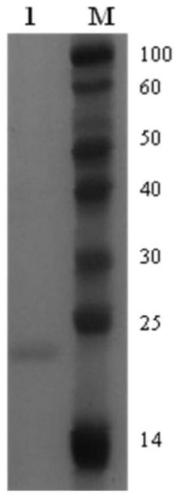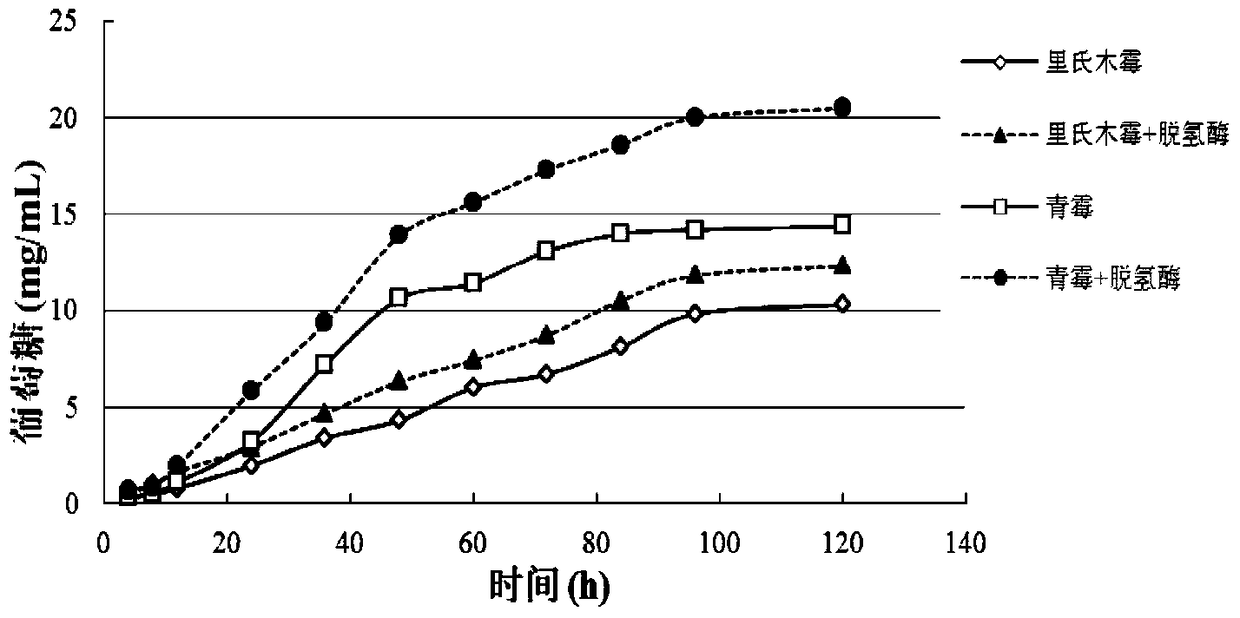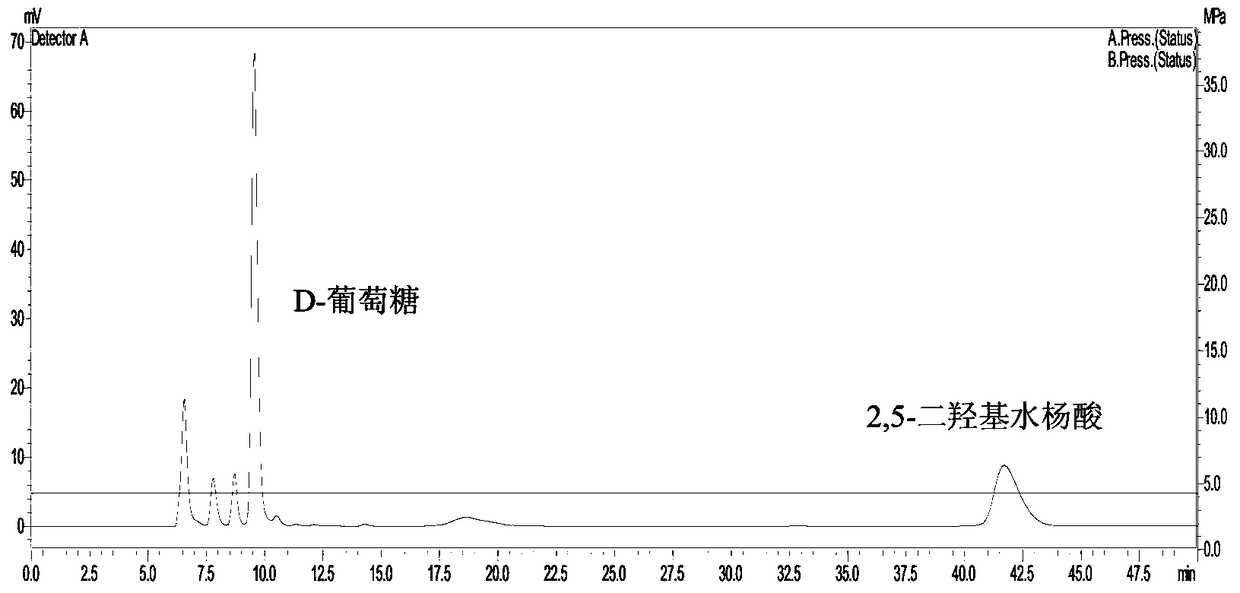Composition and depolymerization method for lignocellulose depolymerization
A technology of lignocellulose and depolymerization, applied in biochemical equipment and methods, enzymes, enzymes, etc., can solve problems such as less obvious synergy, little guiding significance, and unclear mechanism of action
- Summary
- Abstract
- Description
- Claims
- Application Information
AI Technical Summary
Problems solved by technology
Method used
Image
Examples
Embodiment 1
[0037] Isolate and purify the dehydrogenase in the composition of the present invention from the extracellular enzyme liquid of Penicillium juniper:
[0038] Penicillium piceum (Penicillium piceum) H16, preservation number: CGMCC No.8339, preservation unit China General Microbiological Culture Collection Center (China General Microbiological Culture Collection Center).
[0039] For Penicillium juniper, the optimum medium conditions are as follows: 3.3% microcrystalline cellulose, 1.7% corncob steep liquor, 0.5% (NH4) 2 SO 4 , 0.6% KH 2 PO 4 , 0.1% MgSO 4 , 0.25% CaCO 3 , and 0.2% Tween-80. The glass container used for fermentation generally chooses a 300mL Erlenmeyer flask, cultivates 50mL of the culture medium, and shakes it horizontally at 180rpm in a 28-degree incubator for 5 days.
[0040] The instrument used for separation and purification of dehydrogenase is AKTA purifier (GE, Sweden). Using acetic acid-sodium acetate solution with a pH value of 4.8-5.0 and a subst...
Embodiment 2
[0043] Enzyme activity assay of dehydrogenase:
[0044] Application of the conventional methods in the art cellulase and hemicellulase national standard assay method composition-dehydrogenase to carboxymethylcellulose (CMC-Na), salicin (Salicin), PNPC, microcrystalline cellulose ( Avicel), xylan (Xylan), PNPG, and cellobiose were tested for enzyme activity, and the test results are shown in Table 1 below: the composition was found to have no glycoside hydrolase activity.
[0045] Table 1. Preliminary analysis of enzymatic properties of dehydrogenases
[0046]
Embodiment 3
[0048] Research on the mechanism of action of the dehydrogenase of the present invention
[0049] When dehydrogenase was added to the crude enzyme solutions of Trichoderma reesei and Penicillium juniperus at a protein concentration of 40 μg / mL, the hydrolysis efficiencies of the crude enzyme solutions of Trichoderma reesei and Penicillium juniperi increased by 27% and 35%, respectively. %. This is the first time that a dehydrogenase has been found in a cellulase system. The dehydrogenase itself has no enzymatic activity, and there is a strong synergistic effect with the cellulase, so the dehydrogenase belongs to the cellulase synergistic composition, such as figure 2 shown.
[0050] The dehydrogenase protein did not detect hydrolase activity, but when it treated four kinds of lignocellulosic materials with different components, when the hydrolyzate was analyzed by HPLC-42A, it was found that there was a small amount of D-glucose and D-glucose in the hydrolyzate - Sorbitol, ...
PUM
 Login to View More
Login to View More Abstract
Description
Claims
Application Information
 Login to View More
Login to View More - R&D
- Intellectual Property
- Life Sciences
- Materials
- Tech Scout
- Unparalleled Data Quality
- Higher Quality Content
- 60% Fewer Hallucinations
Browse by: Latest US Patents, China's latest patents, Technical Efficacy Thesaurus, Application Domain, Technology Topic, Popular Technical Reports.
© 2025 PatSnap. All rights reserved.Legal|Privacy policy|Modern Slavery Act Transparency Statement|Sitemap|About US| Contact US: help@patsnap.com



